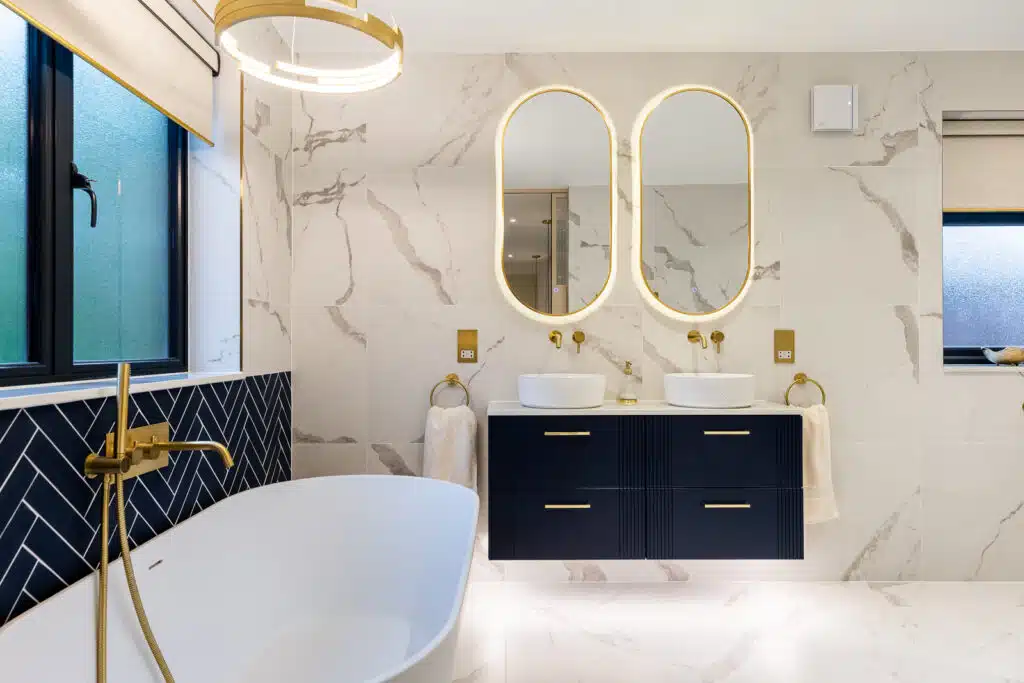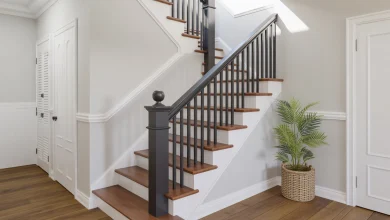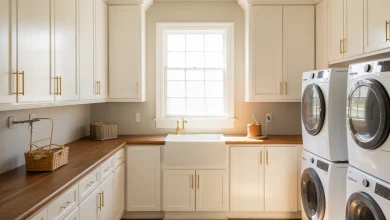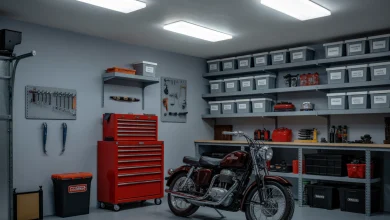Designing a Dream Bathroom? Don’t Overlook the Plumbing
Most people dive into bathroom renovations excited about tile colors, rainfall showers, or that perfect double vanity. But here’s a truth every seasoned contractor or field tech knows: your bathroom’s true success depends less on surface-level design – and more on what’s going on behind the walls.
Plumbing isn’t sexy. It’s rarely the centerpiece of an interior design board. But it’s the foundation for every modern comfort a bathroom offers. And if you get it wrong? No amount of marble or mirrors will fix a poorly pressurized shower or a toilet that needs plunging twice a week.
Having worked on dozens of residential renovations over the past decade, I can tell you with certainty: the best bathrooms aren’t just beautiful. They’re intelligently plumbed.
Here’s how to think like a builder – and why you’ll thank yourself later.

The Layout Starts With Plumbing, Not Pinterest
Let’s say you fall in love with a floating vanity centered on a statement wall. Or you want your tub freestanding in the middle of the room. That’s great – but have you checked where your main drain stack is?
Relocating plumbing fixtures is often the most expensive (and disruptive) part of a remodel. It can involve breaking up concrete, re-sloping lines, or rerouting venting systems through tight attic spaces. All of that adds cost and risk.
That’s why the most practical advice is simple: work with your existing plumbing footprint where possible. If your toilet is already close to the soil stack, maybe it stays. Move the vanity or the tub instead – those are easier to reconfigure.
And if you’re building from scratch? Plan plumbing routes first, before settling on final finishes.
Functionality = Comfort (And Value)
Ask anyone living with a slow-draining shower or a faucet that barely trickles – it doesn’t matter how good it looks if it doesn’t work right.
The plumbing under the surface is what determines water pressure, temperature consistency, and drainage performance.
Here are a few things to consider before you even think about fixtures:
- Are your supply lines properly sized for your new setup?
- Do you have independent shutoffs for all fixtures?
- Is your water heater close enough to avoid long waits for hot water?
- Are your drains vented properly to avoid gurgling or odors?
Poor plumbing planning often leads to expensive do-overs. In some cases, I’ve been called back into homes less than a year after a high-end renovation – because the builder cut corners behind the scenes.
Modern Plumbing Can Complement Design
Good news: you don’t have to choose between form and function.
Today’s plumbing options include sleek wall-mounted faucets, low-profile P-traps, and ultra-quiet flushing systems. Pipe routing can be designed to preserve clean lines. Drainage can be integrated into sloped flooring, especially for walk-in showers.
And yes, exposed copper or matte-black piping can even become a bold visual element in industrial or minimalist bathrooms – if done intentionally.
As long as you plan with a plumber (or at least a general contractor who understandsplumbing system requirements), you can align performance with aesthetics.
Don’t Underestimate Water Efficiency
Many homeowners are embracing eco-conscious design. That means water-saving fixtures, low-flow toilets, and greywater systems.
What they don’t always realize is that efficient plumbing requires careful design:
- Low-flow fixtures need specific pressure ranges to work well.
- Dual-flush toilets must be positioned with proper venting or they’ll perform poorly.
- Greywater reuse demands separate lines and a filter system – which needs to be planned from the beginning, not added later.
A poorly designed eco-bathroom can easily become frustrating – with slow drainage, inconsistent flows, or maintenance headaches.
What Professionals Recommend
Experienced tradespeople often have one key suggestion: futureproof your bathroom.
Add an extra shut-off valve. Leave an access panel behind the tub. Route supply lines in a way that allows for future fixture upgrades.
As shared by a technician from Super Brothers, a California-based plumbing contractor, “We’ve had to cut open walls because a shower valve started leaking, and there was no access point. An extra $40 panel during the build could’ve saved thousands.”
The takeaway? Think beyond just what you need today. Your future self – or the next homeowner – will appreciate the foresight.
Common Mistakes to Avoid
If there’s one thing I’ve learned from years of remodeling bathrooms, it’s that the most expensive fixes come from simple oversights.
Avoid these pitfalls:
- Mismatched materials – Like connecting copper directly to galvanized steel without a dielectric fitting (hello corrosion).
- Overlooking slope – Shower drains that sit too level often cause standing water or pooling.
- Ignoring venting rules – Poorly vented toilets or sinks can cause gurgling or sewer smells.
- Skipping pressure checks – Old galvanized pipes may not handle newer high-pressure systems well.
And whatever you do, don’t bury junctions or fittings in inaccessible walls or floors. Every joint is a potential failure point – treat them accordingly.
To DIY or Not to DIY?
Sure, you can swap a faucet or install a vanity on your own. But major plumbing changes? Leave that to the professionals.
Why? Because improper installation isn’t just inconvenient – it can lead to water damage, mold, or even structural issues. And in many states, plumbing work without a permit may void your insurance coverage if something goes wrong.
Invest in a licensed plumber for:
- Shower pan installation
- Relocating drains or supply lines
- Upgrading main shutoff valves
- Any structural changes affecting venting
You’ll pay more upfront – but you’ll also avoid costly problems later.

Final Thoughts: It’s More Than Just Pipes
When you step into a beautifully designed bathroom, what you don’t see is often what makes it feel luxurious.
Silent flushing. Consistent hot water. Strong pressure. Quick drainage. These experiences are all powered by one thing: smart plumbing.
So, while you’re picking tiles and sketching layout ideas, don’t forget to invite your plumber to the conversation. Their input might not show up on your mood board – but it will absolutely define how your bathroom feels and functions for years to come.
And if you ever doubt how much plumbing affects quality of life, just try living with a toilet that doesn’t flush properly for a week.
Trust me. You won’t forget it.




